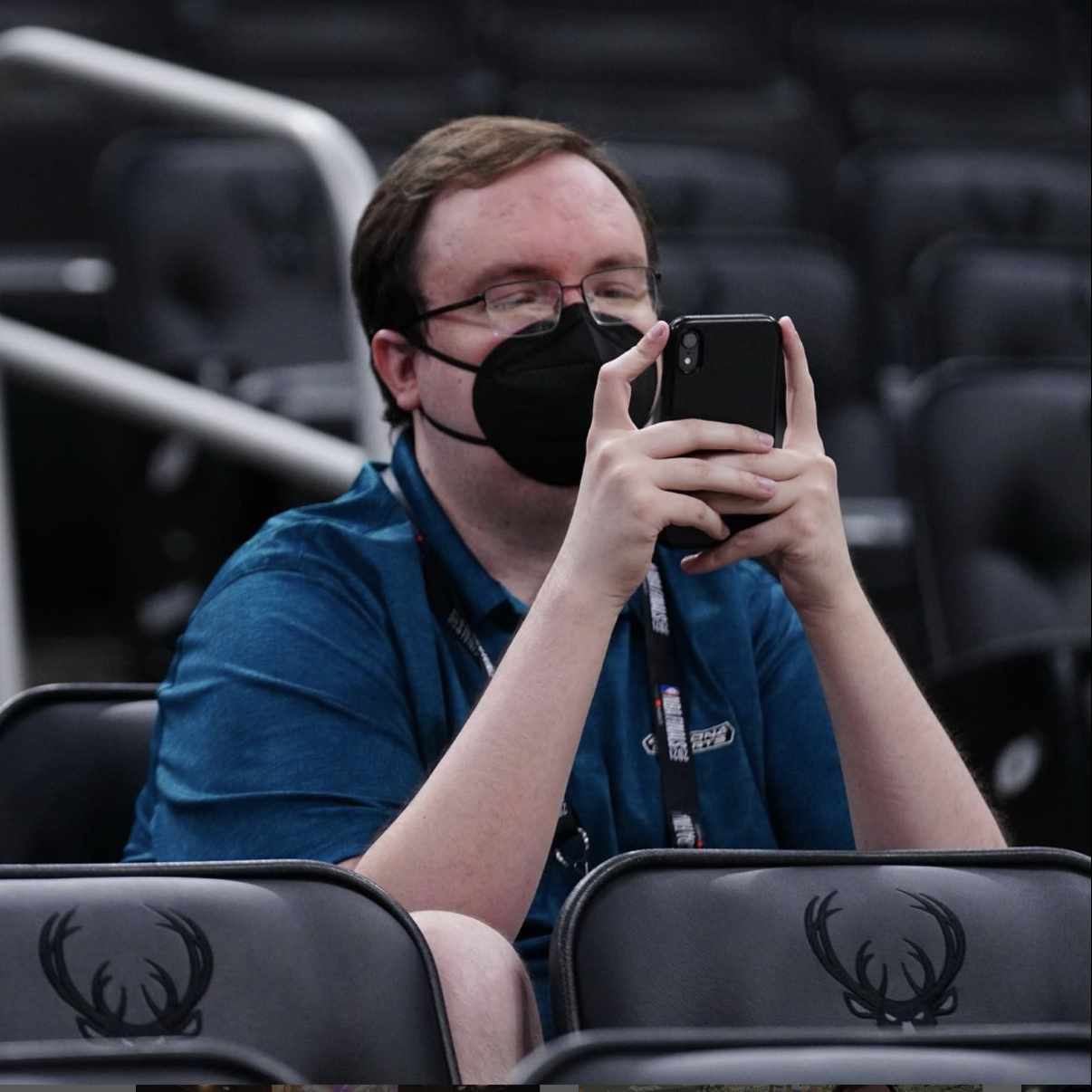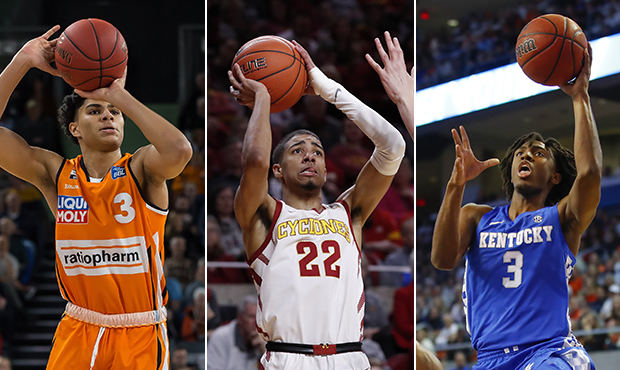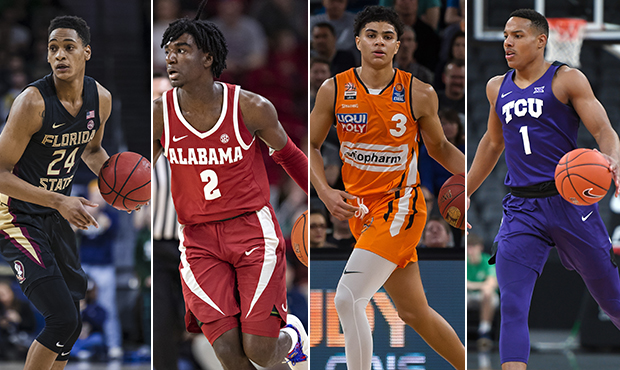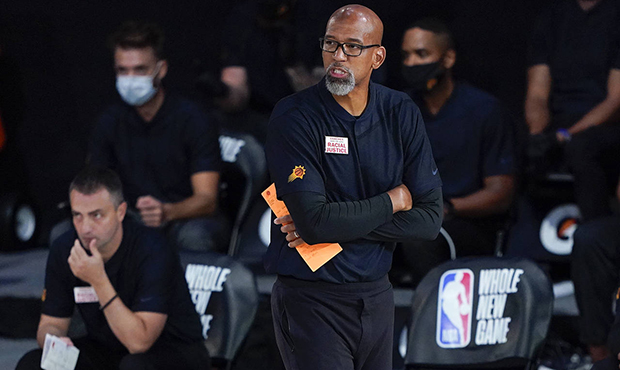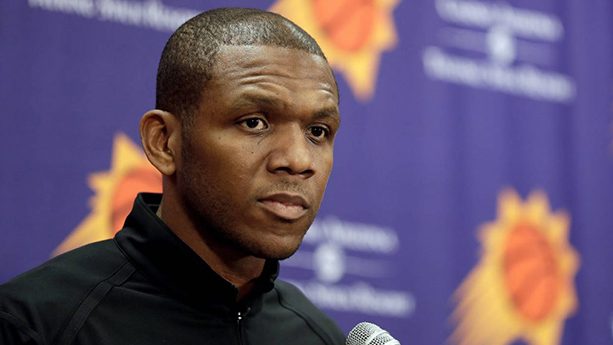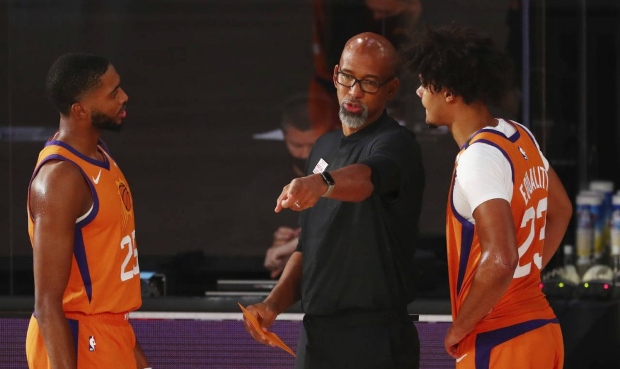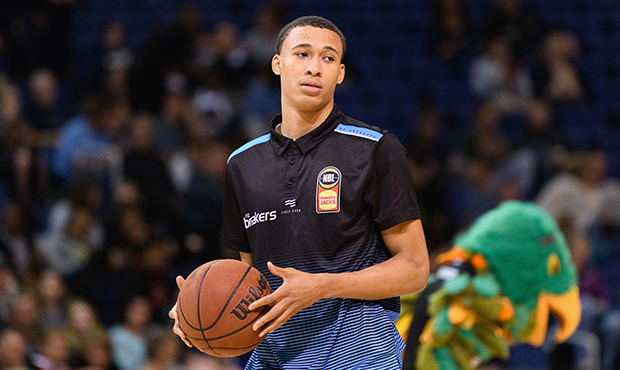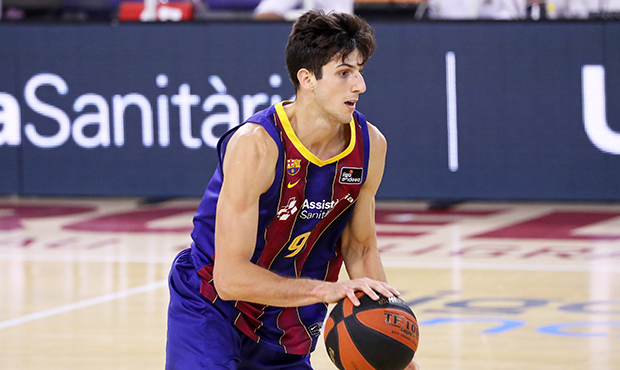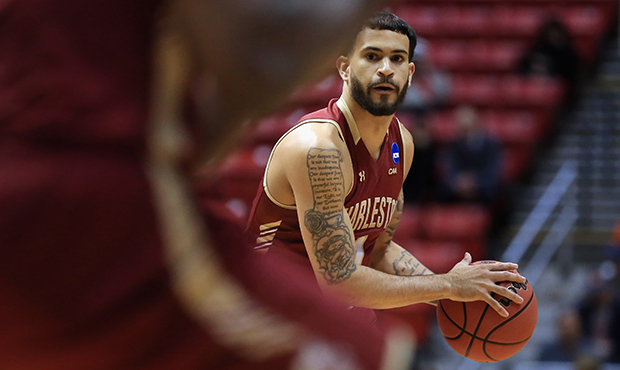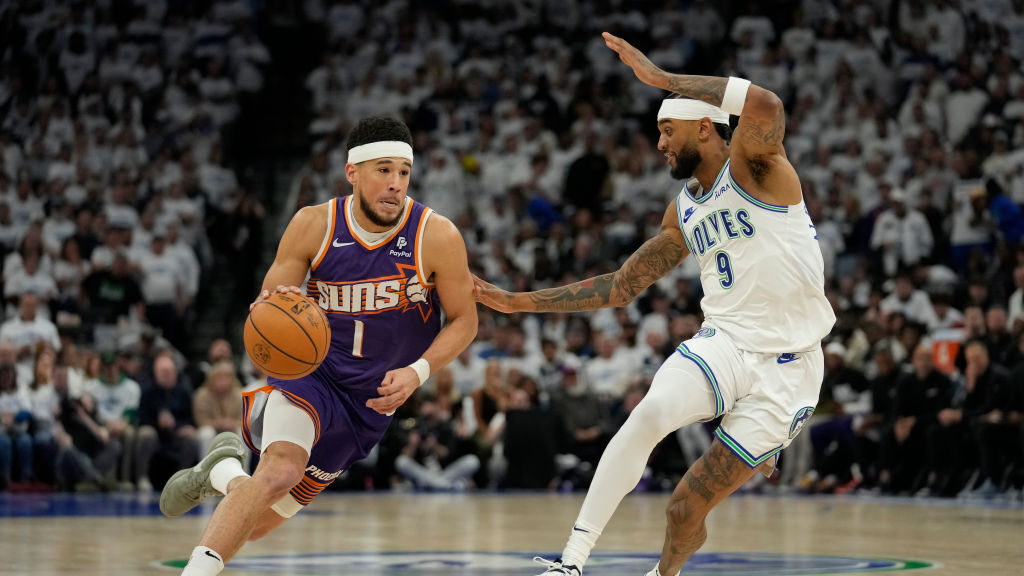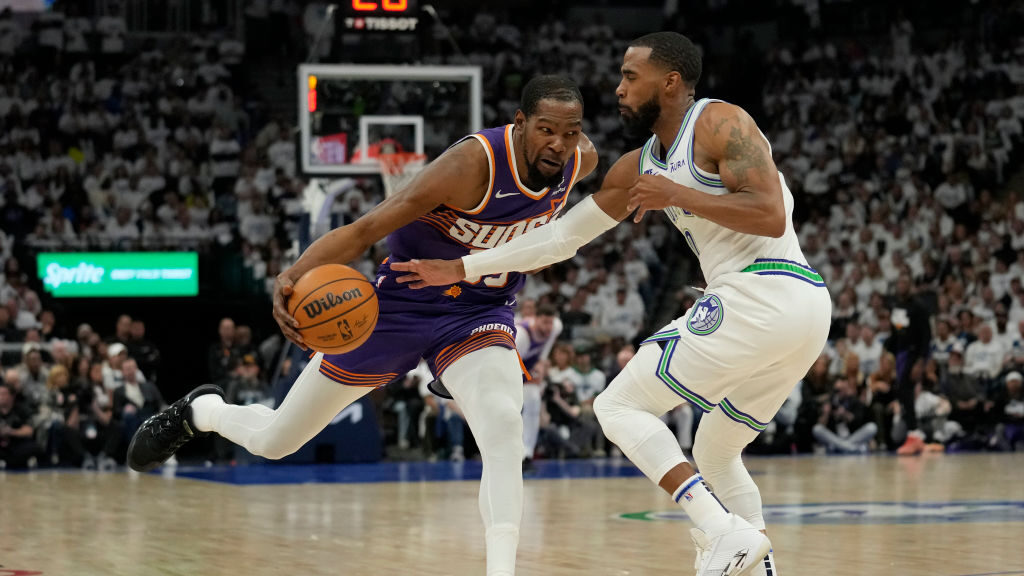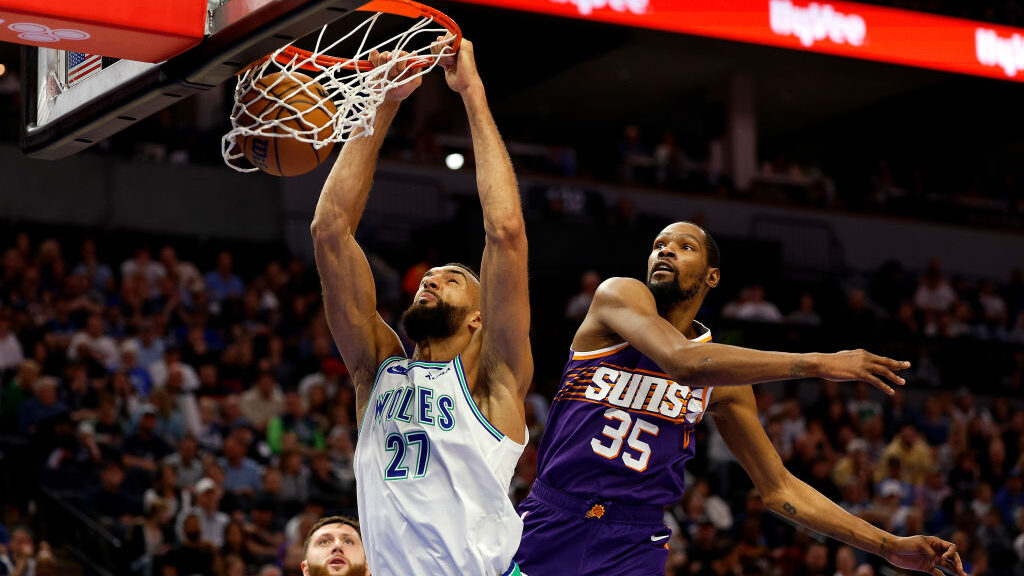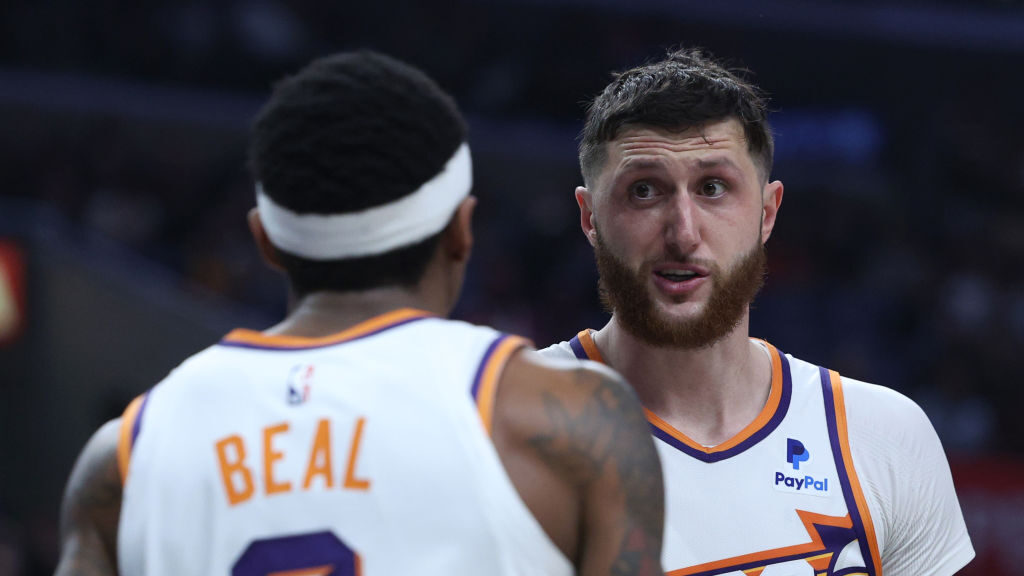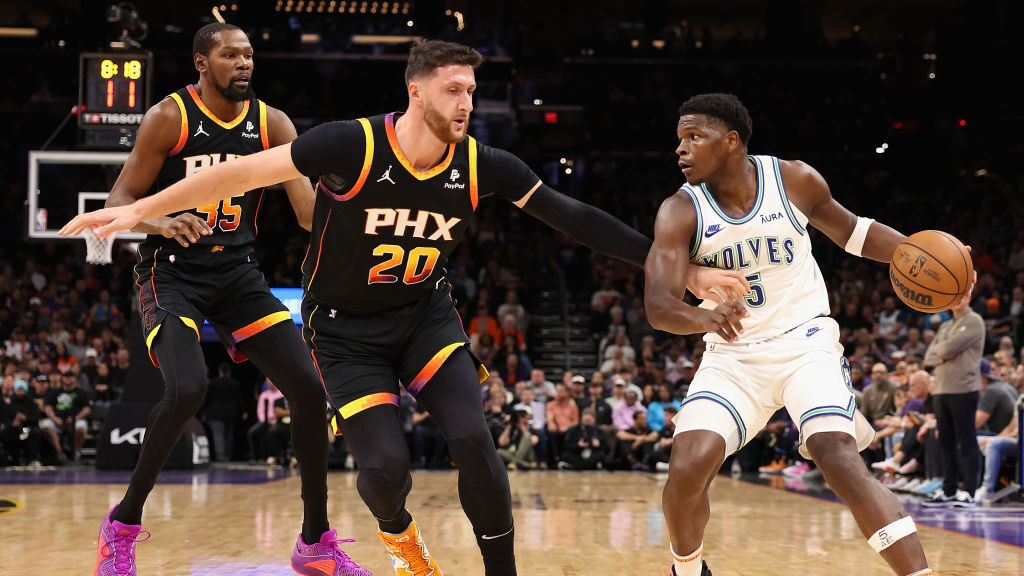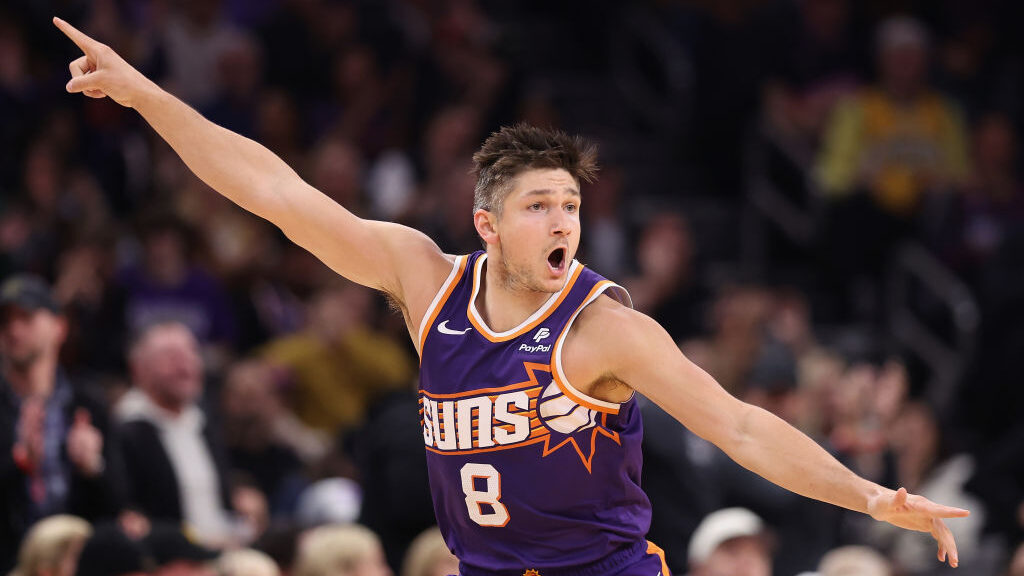Empire of the Suns’ 5×5 NBA Draft Preview: Darkhorse point guards
Oct 30, 2020, 2:08 PM
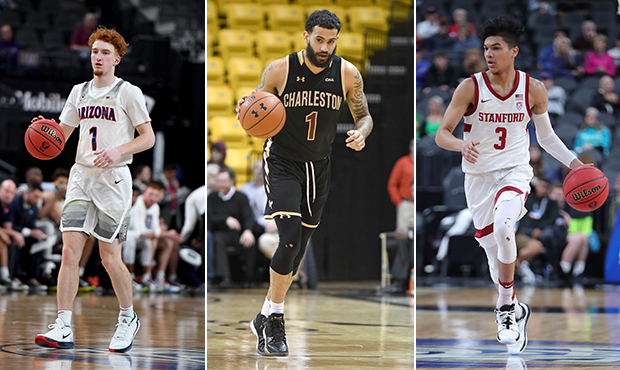
(Getty Images)
(Getty Images)
The NBA has had more than enough time to scout the 2020 NBA Draft class, and despite that, there is still a lacking consensus on the group outside the top-three.
Point guard LaMelo Ball, guard Anthony Edwards and center James Wiseman are the prospects widely assumed to fall no further than five, and then there’s a scattered group that should stick in the lottery.
After that, outcomes range from lightly expected to completely unknown. With under three weeks to go, prospects’ stocks still feel fluid, particularly once you get outside those lottery locks. This is strengthened by the positional depth of this class, with guards, wings and bigs available in most parts of the first round.
This applies specifically to the Phoenix Suns with the No. 10 overall pick, as they are right on the border of those lottery-level guys being gone, and could go in almost any direction with the position they choose to draft.
Based on that, Empire of the Suns will review the three position groups and try to nail down the 25 guys (!) to keep an eye on, which is quite the juxtaposition from a typical draft being down to a handful of prospects.
Through a five-part series, we continue with the point guards in part two, this time looking at some names ranked a bit further away from the Suns’ draft position at No. 10.
All statistics via Sports-Reference and Hoop-Math.
R.J. Hampton, G, USA, 19
Rankings – ESPN: 14, The Ringer: 21, The Athletic: 7
Measurables – 6-foot-5, 6-foot-7 wingspan, 188 pounds
Statistics – 8.8 PPG, 3.9 RPG, 2.4 APG, 1.1 SPG, 40.7 FG%, 29.5 3P%, 67.9 FT%
It’s been a topsy-turvy year for many top prospects not named LaMelo, James and Anthony. Hampton, a top-five prospect in the 2019 recruiting class, according to 247 Sports, is no exception.
A rangy, bouncy guard who will get Russell Westbrook comps, he jumped from high school to the NBL to play for the New Zealand Breakers last year.
It didn’t go nearly as well for him as the ultra-talented and much-relied-upon Ball, but context is important.
Ball was unleashed for a 5-23 team, while Hampton’s squad was in the playoff mix. He struggled to earn playing time but still managed to average 20 minutes a game.
What is he? An explosive athlete with handles good enough to be an oversized lead guard if his body fills out enough to keep physical defenders from reaching through him. There are certainly play-making chops that in 2019-20 came out in transition and on blow-by drives, and his 2.4 assists to 1.5 turnovers per game aren’t out-of-this-world alarming.
RJ Hampton’s best dunk of the season. Ogilvy coming out that high is asking for trouble pic.twitter.com/KE4fxgjXfi
— Jordan McCallum (@jordanmcnbl) December 3, 2019
Shot selection was a blessing and a curse for Hampton. LOTS of his attempts weren’t easy ones, but he also showed fluidity, touch and creativity in how he got into them. That should translate well at the rim if he can cut out the bad mid-range attempts.
Defensively … yeah, there’s going to be catching-up needed. It’s not all an effort problem, however.
Below, Hampton (No. 14) is engaged but gets lucky to recover as he gets caught on a screen while attempting to deny a pass.
RJ Hampton screen navigation is so frustrating to me. Often unaware of what’s happening, and he approaches the screens as if they have a magnetic pull. pic.twitter.com/kde5HpYlDP
— Nuno Soares (@NunoRSoares) July 12, 2020
I believe that his ability to become a true floor general will be predicated on how well he’s developed, because he has the pace, enough vision and the handles.
Hampton’s jumper will also swing his upside, because it’ll open up his play-making abilities and his athleticism. As the numbers indicate, that could be a concern.
Hampton is currently working with former NBA player Mike Miller on a jumper reconstruction. For the Suns, that’s pretty notable as Miller was Suns GM James Jones’ teammate on LeBron James-led teams in Miami and Cleveland.
Miller seems very sure that Hampton’s work ethic and willingness to reconfigure his shot will translate. He’s said so in multiple interviews.
How progress on Hampton’s attempts to fix the jumper could either raise red flags about how bad his shot was to start with or point to the young player’s willingness to improve and at a quick pace. – Kevin Zimmerman
Nico Mannion, PG, Arizona, 19
Rankings – ESPN: 25, The Ringer: 27, The Athletic: 43
Measurables – 6-foot-3, 6-foot-2.5 wingspan, 190 pounds
Statistics – 14.0 PPG, 2.5 RPG, 5.3 APG, 1.2 SPG, 39.2 FG%, 32.7 3P%, 79.7 FT%
Mannion was probably a consensus lottery pick heading into his freshman year at Arizona, but the local product out of Pinnacle High School didn’t meet expectations with the Wildcats.
Let’s place an asterisk here by noting that other point guards haven’t been able to completely show out running Arizona’s motion offense — yet Mannion at times had struggles just running it period. Early attempts in the shot clock and trying to do too much got him in trouble.
That said, he is probably the fourth or fifth best pure passer in this class. Entering the NBA with more pick-and-rolls and more floor spacing will help him in a big way.
Arizona's Nico Mannion with 24 + 9 assists against Illinois, flashing the full skill package of dribble jumpers, shooting off movement, floaters and setup passes. Dangerous scoring ability but also made the game easier for Green (4-7 3PT) + Nnaji (9-12 FG): pic.twitter.com/yPxPQ8vPzR
— Jonathan Wasserman (@NBADraftWass) November 11, 2019
Nice elevation on the shot sometimes takes too long to get to, but he projects as a decent to above-average standstill shooter. His negative wingspan becomes a concern getting off attempts, on defense and when considering how well he finishes at the rim.
Per Hoop-Math, Mannion, who is considered an above-average athlete, took 20% of his shots at the cup and made 54%.
Sticking with Arizona, former point guard T.J. McConnell — a backup lead guard in the NBA — shot 67% at the rim and took 28% of his attempts there as a senior. Again, a lot of that is about shot selection, but there were concerning finishing issues for Mannion, too.
That said, Mannion can certainly do things McConnell cannot.
Nico Mannion took off!! 😱😤 @niccolomannion 🎥 @APlayersProgram pic.twitter.com/8ma8SEpoBt
— Ballislife.com (@Ballislife) November 22, 2019
Defensively, the size is a concern. Mannion plays with effort and at times would bump ball handlers off their spots in college, but he’s not going to be a guy you want switching on a wing or someone who can do much other than keep his body in front of starting point guards. Not at this point, anyway.
Put Mannion in the right system, put good defenders around him and he could end up making lottery teams look bad for passing on him. – Kevin Zimmerman
Leandro Bolmaro, G, Argentina, 19
Rankings – ESPN: 22, The Ringer: 23, The Athletic: 31
Measurables – 6-foot-7, 6-foot-8 wingspan, 180 pounds
Statistics – 8.0 PPG, 1.6 RPG, 2.5 APG, 1.2 SPG, 42.3 FG%, 29.3 3P%, 71.1 FT%
Bolmaro’s one of my favorite prospects in this class. It’s a shame about his shot because there’s so much to like here.
First of all, he plays tough and hard. He is completely unafraid of contact and looks to embrace it for the obvious benefits it brings on both ends. Bolmaro really competes defensively, where you’ll see here that taking a bump is no problem.
Leandro Bolmaro's on-ball defense is among the best in the class. Light on his feet, quick hips, anticipatory, long: pic.twitter.com/mi5K2HeO0t
— Jackson Frank (@jackfrank_jjf) September 29, 2020
Offensively, his first step isn’t half-bad and he is coming at you.
So I know the Bolmaro shooting numbers are bad but I love the way he plays. He's tough and aggressive on drives like all Euros should be. Faster than you think at his size. Moves pretty well on defense. I think there's enough there to go around the passing. pic.twitter.com/VSs6D7ZmEh
— Kellan Olson (@KellanOlson) June 27, 2020
He might be the best passer in this draft, so mixing that in with the downhill drives and a great handle produces some wonderful plays like this.
Leandro Bolmaro is ridiculous. Escapes the pressure (from Phil Pressey!) with the behind the back, setting up the screen, snakes to his right hand, and somehow flips the pass back to the top of the key. So smart, manipulative, and creative pic.twitter.com/GjlfcKtsD2
— Max Carlin (@maxacarlin) April 12, 2020
There’s defensive versatility for a guy at his size, and top-level passers with a high IQ and motor always find a way to pitch in offensively even without a shot.
Am I crazy to see some Shaun Livingston appeal here? Can that work in today’s NBA? I’m excited to see the answer to that question. – Kellan Olson
Tyrell Terry, PG, Stanford, 19
Rankings – ESPN: 40, The Ringer: 8, The Athletic: 23
Measurables – 6-foot-1, (unknown wingspan), 174 pounds
Statistics – 14.6 PPG, 4.5 RPG, 3.2 APG, 1.4 SPG, 44.1 FG%, 40.8 3P%, 89.1 FT%
Terry’s got some buzz. The Ringer’s Kevin O’Connor has him top-10 and he’s become a favorite in the cluster of the back-half of the first round.
He’s getting drafted for his shooting, as Terry shot that strong number you see above on 4.9 attempts per game. Along with the mark at the foul line, the tape of Terry taking threes around screens off the dribble and his off-ball movement are encouraging footnotes for his case as a sniper.
Terry’s got some neat finishing craft and 60.4% efficiency around the rim backs it up.
Caught up on Stanford freshman Tyrell Terry—awfully smooth scoring guard. Only 6-1 without explosion, needs more playmaking reps for NBA scouts, but clearly a prospect to monitor long term. Averaging 16 and 3 with a 60% true shooting pic.twitter.com/Vr5MteDgTT
— Jonathan Wasserman (@NBADraftWass) December 2, 2019
But everything else is hard to find value in.
His ability to create separation is troubling, as shown by an alarming 69.4% of his threes being assisted. That number is traditionally much lower for lead guards, like it was for Trae Young (27.1%), Ja Morant (36.8%) and Collin Sexton (31.8%). Terry percentage compares to Coby White (72.0%), Ty Jerome (68.4%) and Jevon Carter (63.6%). I understand that’s a difference in level of prospects, but that’s the point.
The shooting touch for Terry did not help him on two-point jumpers, where he shot 31.8%. His 3.2 assists a night were off smart passes more than self-creation, to bring up a positive and a negative. He’s small for a guard and really needs size for how much he doesn’t pop athletically.
The shooting, finishing and basketball IQ are enough to find value around the first-round bubble, but I’m not seeing it for consideration beyond that. – Kellan Olson
Grant Riller, G, Charleston, 23
Rankings – ESPN: 39, The Ringer: 43, The Athletic: 25
Measurables – 6-foot-3, (unknown wingspan), 190 pounds
Statistics – 21.9 PPG, 5.1 RPG, 3.9 APG, 1.6 SPG, 49.9 FG%, 36.2 3P%, 82.7 FT%
This is unquestionably the draft’s most underrated prospect.
Riller at this moment has the best ball-handler package in this class. He explodes past dudes off the dribble, shakes ’em off when he doesn’t and finishes at a high level.
Good lord Grant Riller. Hang, burst, euro, wrong foot. With 2 minutes left in a tie game too pic.twitter.com/YRHxy6J2WD
— Max Carlin (@maxacarlin) June 18, 2020
The pull-ups are ridiculous.
I am comfortable saying that Grant Riller has some of the quickest footwork on side-steps I've ever seen, if not the quickest. He really explodes off his inside foot creating a lot of room for the jumper pic.twitter.com/9jfpWJBomB
— Spencer (@SKPearlman) July 6, 2020
The worry is he’s a high-volume, inefficient chucker, but I’ll repeat a stat I put in this space a few months ago: Riller had his true shooting percentage above 60% and usage percentage above 30% in each of his last two seasons, joining Jimmer Fredette, Damian Lillard (twice), C.J. McCollum, Buddy Hield and Ja Morant as guards who got picked in the NBA Draft to do that since 2010.
Even with the point guard chops and defense in a lackluster spot at the moment, Riller’s offense could be special. I think that should be slotted more in the back half of the lottery but the big boards disagree.
Every year there’s an obvious guy or two smacking scouts in the face that still goes far lower than he should and proves lots of teams wrong. Those Draft Twitter Darlings, to be fair, have a mixed success rate. But prospects like Derrick White (29th overall, 2017), Dillon Brooks (45th overall, 2017), De’Anthony Melton (46th overall, 2018) and Brandon Clarke (21st overall, 2019) keep finding ways to slip despite showing enough to go much higher, and the duo of Riller and Desmond Bane could be next. – Kellan Olson

